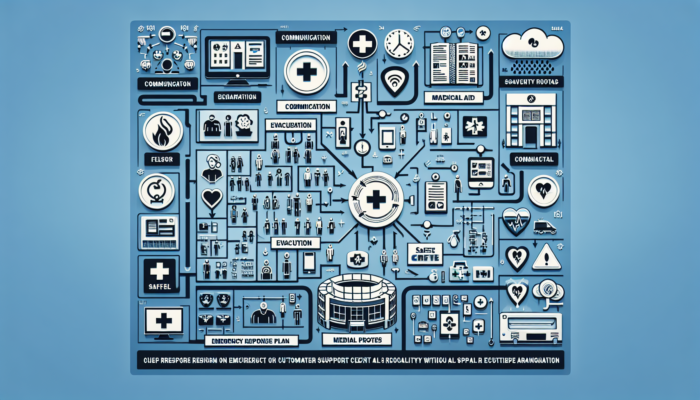Explore the Diverse Landscape of Government Grants and Schemes for Healthcare Entrepreneurs
The landscape of funding options for healthcare entrepreneurs in the United Kingdom is abundant with opportunities, particularly through government grants and schemes. These funding avenues offer not only crucial financial backing but also grant access to invaluable resources such as mentorship and vital industry connections. For healthcare innovators eager to transform their concepts into concrete realities, these schemes can play an instrumental role in accelerating their entrepreneurial journey, making them a key focus for anyone looking to make a significant impact in the healthcare sector.
Unlocking Potential with the NHS Innovation Accelerator (NIA)

The NHS Innovation Accelerator (NIA) stands as a flagship programme meticulously designed to support healthcare innovators in scaling their transformative solutions across the NHS. Funded by NHS England, this initiative offers tailored funding and mentorship to help entrepreneurs adeptly navigate the intricate landscape of the healthcare system. By selecting high-potential innovations that specifically address pressing challenges within the NHS, the NIA provides not just financial aid but also strategic advice and support from experienced professionals in the field, thereby enhancing the likelihood of success for participating entrepreneurs.
Entrepreneurs engaged in the NIA benefit from a structured programme that includes access to various NHS organisations, which can facilitate early testing and integration of their innovative solutions into real-world healthcare settings. The accelerator’s concentrated focus on specific areas, such as improving patient outcomes and enhancing operational efficiency, ensures that the funding aligns seamlessly with the NHS’s strategic priorities. Additionally, participants gain visibility and credibility, which can attract further investment and forge valuable partnerships in the healthcare space.
The NIA boasts a proven track record of success, having supported numerous healthcare innovations that have substantially transformed patient care practices across the UK. For entrepreneurs eager to make a significant impact within the healthcare system, involvement in the NIA can be a game-changer, providing crucial validation and support that propel their ventures forward in a competitive market.
Empowering Healthcare Entrepreneurs through the Small Business Research Initiative (SBRI)
The Small Business Research Initiative (SBRI) stands as an invaluable funding opportunity for healthcare entrepreneurs aiming to develop innovative solutions that tackle specific public sector challenges, including those faced by the NHS. This initiative primarily focuses on stimulating research and development across various sectors, with a pronounced emphasis on healthcare. By offering targeted funding to small businesses, the SBRI encourages the exploration of new technologies and services that have the potential to significantly enhance healthcare delivery and improve patient outcomes.
SBRI funding streams are meticulously tailored to address specific challenges identified by public sector organisations, enabling entrepreneurs to align their projects with pressing needs in the healthcare landscape. This targeted approach not only maximises the impact of the funding but also heightens the likelihood of successful implementation of new innovations, ensuring that resources are allocated efficiently and effectively.
By participating in the SBRI, healthcare entrepreneurs can leverage a structured application process that includes access to expert advice and support throughout the project lifecycle. The initiative also promotes collaboration between businesses and public sector organisations, paving the way for productive partnerships that can lead to additional opportunities and funding avenues.
Moreover, involvement in the SBRI can significantly bolster the credibility of a healthcare venture. Successfully securing SBRI funding demonstrates that a project has undergone rigorous evaluation and has been deemed valuable by public sector professionals, which can attract additional investment from private sources and enhance the venture’s marketability.
Innovate UK Grants: Fueling Innovation in Healthcare
Innovate UK grants represent a significant funding option for healthcare entrepreneurs focused on the development and commercialisation of innovative products and services. As the UK’s national innovation agency, Innovate UK supports businesses across various sectors, including healthcare, by providing essential funding, expert advice, and invaluable networking opportunities that can facilitate growth and development.
Through a series of competitive funding competitions, Innovate UK invites healthcare entrepreneurs to submit proposals for projects that exhibit strong innovative potential. These grants are specifically designed to mitigate the risks associated with innovation, enabling entrepreneurs to develop their ideas without the immediate pressure of financial returns. This approach encourages a robust research and development phase, allowing for thorough testing and refinement of healthcare solutions before they enter the market.
The application process for Innovate UK grants is competitive yet rewarding. Successful applicants gain not only vital funding but also access to a wealth of resources, including workshops, mentoring, and connections to industry experts. This comprehensive support structure is invaluable for entrepreneurs navigating the complexities of the healthcare market, ensuring they are sufficiently equipped to bring their innovations to fruition.
Innovate UK prioritises projects that have the potential to drive economic growth and improve public health, aligning funding opportunities with broader societal goals. This focus ensures that healthcare innovations funded by Innovate UK can have a meaningful impact on patient care and the overall efficiency of healthcare services across the UK.
Academic Health Science Networks (AHSNs): Bridging the Gap in Healthcare Innovation

Academic Health Science Networks (AHSNs) play a pivotal role in facilitating the adoption and integration of innovative healthcare solutions within the NHS. By establishing connections between entrepreneurs and NHS organisations, AHSNs provide essential funding and support to help scale new healthcare innovations effectively. This network of organisations, established throughout England, aims to bridge the gap between research and clinical practice, ensuring that valuable innovations reach patients more swiftly.
AHSNs work closely with healthcare entrepreneurs to identify promising projects that align with NHS priorities. By providing funding and expert guidance, AHSNs assist innovators in navigating the complexities of the healthcare system, addressing regulatory challenges, and formulating effective market entry strategies. This support is particularly advantageous for early-stage entrepreneurs who may lack the experience or resources to launch their innovations successfully.
In addition to funding, AHSNs facilitate collaboration among key stakeholders, including healthcare professionals, researchers, and industry partners. This collaborative approach not only enhances the development of innovative solutions but also fosters a culture of innovation within the NHS. Entrepreneurs who engage with AHSNs benefit from a wealth of expertise and resources, significantly increasing their chances of success in the competitive healthcare market.
Moreover, AHSNs actively promote the dissemination of best practices and lessons learned from successful innovations. This knowledge-sharing enhances the overall healthcare ecosystem, paving the way for more effective and efficient patient care solutions across the UK.
Exploring Private Investment Opportunities for Healthcare Ventures
As healthcare entrepreneurs navigate the intricate financial landscape of launching and scaling their businesses, private investment emerges as a vital source of funding. This avenue offers a diverse range of options, from venture capital to angel investors, each providing unique benefits and tailored support for healthcare innovators. Understanding these funding options is crucial for entrepreneurs looking to elevate their healthcare solutions to new heights, ensuring they are well-positioned for success in a competitive market.
Securing Growth with Venture Capital
Venture capital (VC) firms stand as a prominent source of private investment for high-growth healthcare startups. These firms specialise in identifying and funding innovative businesses with the potential for significant returns on investment. Healthcare entrepreneurs seeking venture capital must present compelling business propositions that highlight the market potential and scalability of their innovations, thereby capturing the attention of potential investors.
VC firms not only provide essential capital but also offer strategic support, leveraging their industry expertise to help entrepreneurs refine their business models and navigate the complexities of the healthcare landscape. This support can be crucial for startups aiming to establish themselves in a competitive market. Furthermore, venture capital firms often maintain extensive networks that can facilitate introductions to potential clients, partners, and additional investors.
Healthcare entrepreneurs should be prepared for a rigorous due diligence process when seeking venture capital funding. This process involves a thorough evaluation of the business’s financials, market potential, and operational capacity. However, successfully securing VC funding can be transformative, enabling entrepreneurs to accelerate product development, expand their teams, and enhance their marketing strategies.
In the UK, several notable VC firms focus specifically on healthcare investments, such as Syncona and Draper Esprit. By aligning with the right VC partner, entrepreneurs can unlock not only the necessary funding but also a wealth of knowledge and resources that can significantly enhance their chances of success in the healthcare sector.
Engaging Angel Investors for Early-Stage Support

Angel investors play a critical role in the ecosystem of funding options for healthcare entrepreneurs, particularly during the early stages of business development. These individuals invest their personal funds into startups, often in exchange for equity or convertible debt. Beyond financial support, angel investors frequently provide mentorship, industry connections, and valuable insights, making them an invaluable resource for budding healthcare innovators looking to establish themselves in the market.
Engaging with angel investors typically requires a strong pitch that articulates the unique value proposition of the healthcare solution. Entrepreneurs must demonstrate a clear understanding of the market landscape, competitive advantages, and potential returns on investment. Building a compelling narrative around the innovative nature of their healthcare solutions is essential to capturing the interest of potential angel investors and securing their support.
In the UK, numerous angel networks specifically focus on healthcare, such as the Angel CoFund and Health Angels. These networks connect entrepreneurs with a pool of investors who are passionate about advancing healthcare innovation. By participating in pitch events and networking opportunities, entrepreneurs can increase their visibility and improve their chances of securing angel investment, which can be instrumental in their growth journey.
Additionally, angel investors often bring a wealth of experience from their careers, which can provide entrepreneurs with invaluable guidance as they navigate the challenges of launching a healthcare venture. Building a strong relationship with an angel investor can create a supportive environment that fosters growth and innovation, ultimately benefitting both parties involved.
Crowdfunding Platforms: Harnessing Community Support
Crowdfunding has emerged as a dynamic funding option for healthcare entrepreneurs, allowing them to raise capital from a large number of individual investors via online platforms. This model not only provides essential funding but also serves as a litmus test for market interest in their healthcare solutions. By presenting their projects on crowdfunding platforms, entrepreneurs can gauge public reception and gather valuable feedback early in the development process, which can inform future iterations of their innovations.
Several platforms, including Crowdcube and Seedrs, cater specifically to healthcare entrepreneurs, enabling them to showcase their innovations and attract investment from both seasoned investors and the general public. Successful crowdfunding campaigns often rely on compelling storytelling, clear communication of the problem being solved, and detailed explanations of how the funds will be utilised to develop the proposed solutions.
The advantages of crowdfunding extend beyond financial gains; entrepreneurs can build a community of supporters who are invested in their success. This community can provide invaluable insights, promote the product or service, and create buzz around the launch. Furthermore, a successful crowdfunding campaign can validate the business model, attracting additional investment from venture capitalists and angel investors who may be more inclined to invest in a proven concept.
Despite its many benefits, entrepreneurs must be aware of the challenges associated with crowdfunding, including the need for a well-planned marketing strategy to ensure visibility. Successful campaigns often leverage social media and other marketing channels to drive traffic to their crowdfunding pages, maximising their chances of reaching funding goals. By utilising crowdfunding effectively, healthcare entrepreneurs can tap into a reservoir of resources and support, propelling their ventures forward in a competitive and rapidly evolving market.
Traditional Financing: Bank Loans and Alternative Financing Options
For healthcare entrepreneurs, bank loans and financing options represent a traditional yet vital avenue for securing necessary capital. While navigating the financial landscape can be daunting, understanding the various loan products available can empower entrepreneurs to make informed decisions that benefit their healthcare ventures. This understanding can lead to strategic financial planning and ensure that funds are allocated effectively to support business growth.
Start Up Loans: Government-Backed Funding for New Ventures
The Start Up Loans programme is an accessible funding option provided by the UK government for new businesses, including those in the healthcare sector. This initiative offers government-backed loans at low-interest rates, making it an attractive option for entrepreneurs seeking to establish their ventures without incurring high levels of debt. By providing accessible financing, the programme fosters entrepreneurship and innovation within the healthcare landscape.
Tailored specifically for startups, the Start Up Loans programme allows entrepreneurs to borrow up to £25,000, with repayment terms typically spanning five years. The application process is streamlined, ensuring that new business owners can access the funds they need promptly. Additionally, successful applicants receive mentoring and support throughout the repayment phase, which can be invaluable for entrepreneurs navigating the challenges of early-stage business development and growth.
Start Up Loans are particularly beneficial for healthcare entrepreneurs with innovative ideas that require funding for research, product development, or operational costs. By alleviating some of the financial burden, this programme enables entrepreneurs to focus on refining their offerings and bringing their healthcare solutions to market without the constraints of excessive debt.
Moreover, the supportive ecosystem surrounding Start Up Loans, including access to mentors and workshops, fosters a culture of entrepreneurship. By engaging with other like-minded individuals, healthcare entrepreneurs can share insights, learn from each other’s experiences, and gain motivation to overcome obstacles, ultimately enhancing their chances of success in the healthcare sector.
British Business Bank Loans: Supporting Growth in Healthcare
The British Business Bank offers a range of financing solutions specifically designed to support business development and growth. For healthcare entrepreneurs, securing a loan from this institution can provide essential capital to advance their projects and achieve their strategic objectives. This targeted support can significantly enhance the prospects of success for healthcare ventures, enabling them to innovate and improve patient care.
Unlike traditional bank loans, the British Business Bank focuses on supporting smaller businesses that may struggle to secure funding through conventional channels. This approach is particularly beneficial for healthcare startups, which often face unique challenges in securing financing due to the sector’s inherent risks and complexities. By catering to the specific needs of healthcare entrepreneurs, the British Business Bank plays a crucial role in fostering innovation within the sector.
The application process for British Business Bank loans is designed to be accessible, with a focus on understanding the unique needs of healthcare entrepreneurs. By providing flexible financing options, such as term loans and asset finance, the British Business Bank enables startups to tailor their funding solutions to their specific requirements, ultimately facilitating their growth and development.
Moreover, the British Business Bank’s commitment to fostering growth in the UK economy aligns with the goals of healthcare entrepreneurs aiming to innovate and improve patient care. By partnering with this institution, entrepreneurs can gain access to not only financial resources but also a network of industry expertise and support that can significantly enhance their chances of success in the healthcare landscape.
Asset-Based Lending: Unlocking Capital through Existing Assets
Asset-based lending is an innovative financing option that allows healthcare entrepreneurs to leverage their existing assets—such as equipment, inventory, or accounts receivable—to secure loans. This approach can be particularly advantageous for startups that may lack a long credit history or traditional collateral. By utilising asset-based lending, healthcare entrepreneurs can access capital more quickly and easily than through conventional loan processes, enhancing their operational flexibility.
Lenders assess the value of the assets and provide funding based on a percentage of that value, enabling entrepreneurs to unlock liquidity while maintaining ownership of their businesses. In the healthcare sector, where equipment and technology often represent a significant investment, asset-based lending can provide crucial funding for expansion or operational costs, allowing entrepreneurs to focus on their core business activities.
Entrepreneurs considering asset-based lending should conduct a thorough analysis of their assets and ensure they have a clear repayment plan in place. By carefully managing their financial commitments, healthcare startups can leverage this financing option effectively while minimising risk and maximising the potential for growth and innovation.
Invoice Financing: Enhancing Cash Flow for Healthcare Ventures
Invoice financing is a practical funding solution for healthcare businesses looking to improve cash flow without taking on additional debt. This innovative approach allows entrepreneurs to use outstanding invoices as collateral to secure immediate funding, effectively bridging the gap between invoicing clients and receiving payments. For healthcare entrepreneurs, managing cash flow can often be a challenge, especially when dealing with long payment cycles from clients or NHS contracts.
Invoice financing provides a lifeline, enabling businesses to access funds quickly to cover operational expenses, payroll, or investment in growth initiatives. The process for invoice financing involves submitting outstanding invoices to a financing provider, which advances a percentage of the invoice value—typically around 80%. Once the client pays the invoice, the financing provider receives the payment, and the entrepreneur receives the remaining balance, minus any fees charged.
This method not only enhances cash flow but also allows healthcare entrepreneurs to concentrate on their core business activities without the stress of financial strain. By utilising invoice financing strategically, healthcare startups can maintain their operational momentum and invest in innovative solutions that improve patient care while ensuring financial stability.
University and Research Funding: Unlocking Innovation through Collaboration
For healthcare entrepreneurs, university and research funding presents a unique opportunity to access resources that can drive innovation and the commercialisation of research findings. Collaborating with academic institutions can open doors to valuable funding streams, mentorship, and shared expertise, creating a robust foundation for developing impactful healthcare solutions.
Knowledge Transfer Partnerships (KTPs): Bridging Academia and Industry
Knowledge Transfer Partnerships (KTPs) serve as a vital link between businesses and universities, facilitating collaborations that drive innovation. For healthcare entrepreneurs, engaging in a KTP can provide funding for joint projects aimed at developing new products or services that address specific healthcare challenges. These partnerships leverage academic expertise and resources to enhance innovation efforts within the healthcare sector.
Through KTPs, healthcare entrepreneurs gain access to the knowledge and skills of university researchers, fostering an environment of collaboration that can lead to groundbreaking developments in healthcare technology and practice. The funding provided through KTPs typically covers a significant portion of the project costs, reducing the financial burden on healthcare entrepreneurs and allowing them to focus on research and development.
Moreover, KTPs foster long-term relationships between businesses and universities, creating a foundation for future collaborations and access to additional funding opportunities. By participating in a KTP, healthcare entrepreneurs can position themselves at the forefront of innovation, driving meaningful advancements in patient care and health outcomes while contributing to the broader landscape of healthcare research.
Research Council Grants: Fueling Scientific Advancements in Healthcare
Research councils in the UK offer a range of grants aimed at promoting healthcare research and development projects. These grants are designed to support innovative ideas that can lead to significant breakthroughs in medical science and healthcare delivery, making them a valuable funding option for entrepreneurs in the sector. By securing research council grants, healthcare entrepreneurs can gain access to the resources necessary for advancing their projects and enhancing patient care.
Healthcare entrepreneurs seeking research council grants must typically demonstrate the scientific merit of their proposals, outlining potential impacts on health and society. The competitive application process encourages thorough research planning and collaboration with academic institutions or research organisations, ensuring that funded projects are robust and capable of delivering meaningful results.
Research council grants not only provide essential funding but also enhance the credibility of healthcare ventures. Successfully obtaining a grant from a respected research council signals to investors and stakeholders that the project has undergone rigorous evaluation and holds promise for meaningful contributions to the field. Furthermore, many research councils offer additional support, including networking opportunities, workshops, and access to industry experts, ensuring that entrepreneurs are well-equipped to advance their projects effectively.
University Spin-Out Funding: Transforming Academic Research into Marketable Solutions
Many universities in the UK have established funding programmes specifically aimed at supporting the commercialisation of research findings through spin-out companies. For healthcare entrepreneurs, these programmes provide a unique opportunity to transform academic research into viable business ventures that can address real-world healthcare challenges. This funding pathway enables innovators to bridge the gap between scientific discovery and practical application.
University spin-out funding typically focuses on projects with strong commercial potential, offering financial backing, mentorship, and access to university resources. Entrepreneurs involved in spin-outs benefit from the expertise of researchers and academic professionals, significantly enhancing the development of innovative healthcare solutions that are market-ready and impactful.
Additionally, universities often provide support in the form of office space and access to research facilities, further reducing the barriers to entry for healthcare entrepreneurs. This collaborative environment fosters innovation and allows entrepreneurs to leverage the intellectual capital of the university to refine their offerings and ensure that they meet market needs effectively.
By collaborating with universities, healthcare entrepreneurs can tap into a wealth of knowledge and resources, increasing their chances of successfully bringing their innovations to market. Spin-out funding represents a powerful avenue for transforming academic research into impactful healthcare solutions that can ultimately benefit patients and healthcare providers alike.
Collaborative Research Initiatives: Fostering Innovation through Partnership
Collaborative research initiatives between universities and industry partners are essential for advancing technology and innovation in healthcare. These partnerships often result in joint funding opportunities that support research projects aimed at developing new healthcare solutions. For healthcare entrepreneurs, participating in collaborative research initiatives can provide access to diverse funding streams and resources, creating a robust framework for exploring innovative ideas.
By pooling expertise and funding from multiple sources, these initiatives create a conducive environment for conducting research that can lead to practical applications in the healthcare sector. Engaging in collaborative research not only enhances the visibility of healthcare ventures but also fosters relationships with academic institutions and industry stakeholders, amplifying the impact of their innovations.
Moreover, collaborative research initiatives often focus on addressing pressing healthcare challenges, ensuring that funded projects have the potential for meaningful contributions to patient care and public health. By aligning their efforts with such initiatives, healthcare entrepreneurs can significantly enhance their credibility and market potential while driving advancements in healthcare delivery.
Government Research Scholarships: Supporting the Next Generation of Healthcare Innovators
Government research scholarships provide crucial funding support for postgraduate students engaged in healthcare research at universities. These scholarships not only alleviate financial burdens for students but also contribute to the broader innovation ecosystem by fostering a new generation of healthcare researchers and entrepreneurs. This support is vital for creating a pipeline of talent that can drive future advancements in the sector.
Postgraduate students receiving government research scholarships can focus on developing impactful healthcare solutions without the constraints of financial stress. This support allows them to dedicate their efforts to research projects that can lead to groundbreaking advancements in medical technology and patient care, ultimately benefiting the healthcare landscape.
As these students progress through their research, they often collaborate with healthcare entrepreneurs and industry partners, creating a synergistic relationship that can drive innovation. The insights gained from academic research can inform the development of new products and services, ultimately benefiting the healthcare sector as a whole.
Additionally, government research scholarships enhance the credibility of the recipients, signalling a commitment to excellence and innovation in healthcare research. This recognition can be invaluable for entrepreneurs seeking to attract funding and partnerships, as it showcases the potential for meaningful contributions to the field.
Incubators and Accelerators: Nurturing Healthcare Startups
Incubators and accelerators specifically tailored for the healthcare sector provide vital support for entrepreneurs seeking to launch and scale their businesses. These programmes often offer funding, mentorship, and access to industry networks, creating a robust environment for innovation and growth. By participating in these programmes, healthcare entrepreneurs can significantly enhance their chances of success and drive advancements in patient care.
MedCity Accelerator: Empowering Healthcare Startups in London
The MedCity Accelerator is a premier programme designed to support healthcare startups in London and the surrounding areas. By providing funding, mentorship, and access to a vast network of industry experts, MedCity empowers entrepreneurs to refine their healthcare solutions and bring them to market effectively. This accelerator plays a crucial role in fostering innovation within the healthcare sector.
Participating in the MedCity Accelerator grants healthcare entrepreneurs access to tailored support that addresses specific challenges they may face in the healthcare sector. The programme includes workshops, one-on-one mentoring sessions, and networking events, all aimed at fostering innovation and collaboration among participants, ultimately enhancing the development of impactful healthcare solutions.
Moreover, the MedCity Accelerator connects entrepreneurs with established healthcare organisations, facilitating partnerships that can lead to additional funding opportunities and resources. This collaborative environment enhances the overall success rate of participating startups, ensuring they are well-equipped to navigate the complexities of the healthcare landscape.
Entrepreneurs involved in the MedCity Accelerator also benefit from increased visibility within the healthcare community, which can attract further investment and interest from potential partners. By leveraging the resources and support provided by this accelerator, healthcare startups can significantly enhance their chances of success and drive innovation in the sector.
DigitalHealth.London Accelerator: Advancing Digital Health Innovation
The DigitalHealth.London Accelerator is a dedicated programme designed to support digital health innovators in London. With a focus on advancing technology solutions that improve healthcare delivery, this accelerator provides essential funding and resources for healthcare entrepreneurs looking to revolutionise the sector. By participating in this programme, entrepreneurs can position themselves at the forefront of digital health innovation.
Through the DigitalHealth.London Accelerator, entrepreneurs gain access to a tailored curriculum that addresses the specific challenges faced by digital health startups. The programme includes workshops, mentorship from industry leaders, and opportunities to collaborate with NHS organisations, ensuring that participants are well-prepared to succeed in the competitive digital health landscape.
Additionally, the accelerator fosters a collaborative community of like-minded entrepreneurs, enabling participants to share insights, learn from each other, and build valuable connections. This network can prove invaluable for healthcare innovators seeking to refine their products and expand their reach within the market.
By engaging with the DigitalHealth.London Accelerator, healthcare entrepreneurs can make significant strides in digital innovation, gaining the necessary support to bring their solutions to market effectively and make a meaningful impact on patient care.
HealthTech Incubators: Fostering Growth for Healthcare Innovators
Numerous healthtech incubators across the UK provide essential funding, workspace, and resources for healthcare entrepreneurs. These incubators create supportive environments where innovators can develop their ideas and access mentorship from experienced professionals in the healthcare sector. By participating in these incubators, healthcare entrepreneurs can accelerate their growth trajectories and bring their innovations to market more effectively.
In healthtech incubators, entrepreneurs benefit from tailored programmes that focus on the unique challenges associated with developing healthcare solutions. This includes access to funding opportunities, workshops on regulatory compliance, and guidance on market entry strategies. Such comprehensive support helps entrepreneurs refine their products and navigate the complexities of the healthcare landscape successfully.
Moreover, healthtech incubators foster collaboration among participants, creating an environment where entrepreneurs can share knowledge and resources. This community-driven approach enhances the overall innovation ecosystem, ensuring that healthcare startups are well-equipped to succeed in a competitive market.
By leveraging the resources and opportunities provided by healthtech incubators, healthcare entrepreneurs can significantly enhance their chances of success and drive innovation in the healthcare sector.
Further Opportunities with the NHS Innovation Accelerator
The NHS Innovation Accelerator continues to play a vital role in supporting promising healthcare innovations across the UK. By providing mentorship, networking opportunities, and funding, the NHS Innovation Accelerator helps entrepreneurs scale their ideas and integrate them into the NHS effectively. This programme remains a cornerstone for healthcare innovators seeking to make a lasting impact.
Participating in the NHS Innovation Accelerator grants healthcare entrepreneurs access to a wealth of resources, including guidance from NHS professionals, insights into the healthcare market, and connections to potential partners. This support is essential for innovators looking to navigate the complexities of the NHS and ensure successful implementation of their solutions, thereby enhancing patient care.
The programme’s focus on identifying high-potential innovations ensures that funding is directed toward projects that can deliver meaningful improvements in patient care and operational efficiency. As a result, entrepreneurs involved in the NHS Innovation Accelerator not only benefit from financial support but also gain credibility and visibility within the healthcare community, further enhancing their prospects for success.
By leveraging the resources and expertise offered by the NHS Innovation Accelerator, healthcare entrepreneurs can significantly enhance their chances of success, driving innovation and improving health outcomes across the UK.
Corporate Partnerships: Strategic Collaborations for Healthcare Funding
Establishing corporate partnerships is a strategic approach for healthcare entrepreneurs seeking funding and resources to drive innovation. Collaborating with established organisations can provide access to capital, industry expertise, and valuable networks that can significantly enhance the growth trajectory of healthcare ventures. This collaborative approach allows entrepreneurs to leverage the strengths of established players in the healthcare market, facilitating the development of innovative solutions that address pressing healthcare challenges.
NHS Trust Collaborations: Innovating Within the Healthcare Ecosystem
Collaborating with NHS trusts offers healthcare entrepreneurs a unique opportunity to develop and test new solutions within the healthcare ecosystem. These partnerships can provide access to funding, resources, and insights into the specific needs of the NHS, enabling entrepreneurs to align their innovations with organisational priorities effectively. By working closely with NHS trusts, entrepreneurs can gain valuable feedback and data that can inform the development of their solutions.
NHS trusts are often keen to engage with innovative startups that can address pressing challenges within the healthcare system. By collaborating on pilot projects or trials, entrepreneurs can showcase the value of their solutions while also gaining access to essential data and feedback that can inform further development.
Moreover, these collaborations can enhance the credibility of healthcare ventures, as working with NHS trusts signals a commitment to quality and evidence-based practice. This credibility can be invaluable when seeking additional investment or partnerships, demonstrating that the entrepreneur is capable of engaging effectively with major healthcare stakeholders.
By building strong partnerships with NHS trusts, healthcare entrepreneurs can create a supportive and collaborative environment that fosters innovation and drives meaningful improvements in patient care across the healthcare landscape.
Pharmaceutical Company Partnerships: Accelerating Healthcare Innovation
Partnering with pharmaceutical companies can be an excellent funding option for healthcare entrepreneurs looking to develop new solutions or technologies. These collaborations can provide not only financial backing but also access to extensive industry expertise, research capabilities, and resources that can significantly enhance the development process. By leveraging the resources of pharmaceutical partners, healthcare entrepreneurs can accelerate the pace of innovation and improve the success rate of their projects.
Pharmaceutical companies are often interested in collaborating with innovative startups that align with their strategic goals. By entering into partnerships, healthcare entrepreneurs can gain insights into market trends, regulatory requirements, and best practices that can inform their product development efforts. This access to industry knowledge can be pivotal in navigating the complexities of the healthcare market.
Furthermore, partnerships with pharmaceutical companies can lead to joint marketing efforts, increasing visibility and reach for healthcare solutions. By leveraging the established reputation and networks of pharmaceutical partners, entrepreneurs can enhance their chances of successful market entry and adoption, driving the uptake of their innovations in the healthcare sector.
To establish successful partnerships with pharmaceutical companies, healthcare entrepreneurs should articulate their value propositions clearly, highlighting the unique benefits of their innovations. By fostering strong relationships, entrepreneurs can create mutually beneficial collaborations that drive innovation and improve patient care outcomes.
Medical Device Manufacturer Partnerships: Enhancing Product Development
Collaborating with medical device manufacturers presents a valuable opportunity for healthcare entrepreneurs seeking funding and expertise for product development. These partnerships can provide access to resources, knowledge, and funding that can significantly enhance the chances of success for healthcare innovations. By partnering with manufacturers, entrepreneurs can ensure that their products are designed with industry standards in mind, improving their market readiness.
Medical device manufacturers are often keen to engage with innovative startups that can complement their existing product lines or address unmet needs in the market. By partnering with these manufacturers, healthcare entrepreneurs can gain insights into production processes, regulatory requirements, and market dynamics that can inform their development efforts, ensuring that their products meet the necessary standards for quality and safety.
Additionally, medical device manufacturers can provide funding for joint projects, facilitating the development of new technologies and products. This collaborative approach not only accelerates the innovation process but also enhances the overall success rate of healthcare ventures, driving advancements in medical technology and patient care.
To build successful partnerships with medical device manufacturers, entrepreneurs should focus on demonstrating the unique value proposition of their innovations. By fostering strong relationships based on mutual benefit and shared goals, healthcare entrepreneurs can create partnerships that drive innovation and improve health outcomes for patients.
Public-Private Partnerships: Collaborative Funding for Healthcare Innovation
Public-private partnerships (PPPs) represent a powerful funding option for healthcare entrepreneurs seeking to drive innovation within the sector. These collaborations enable the pooling of resources, expertise, and funding from both public and private entities, creating a robust framework for advancing healthcare solutions. By leveraging the strengths of both sectors, entrepreneurs can enhance the impact of their innovations and improve health outcomes across the board.
Life Sciences Industrial Strategy: A Framework for Growth
The Life Sciences Industrial Strategy is a government initiative aimed at strengthening the UK’s position as a global leader in life sciences and healthcare innovation. This strategy encourages public-private partnerships that drive investment in research and development, benefiting healthcare entrepreneurs seeking funding and support for their innovative solutions. By creating a collaborative environment, the Life Sciences Industrial Strategy facilitates partnerships between government bodies, academic institutions, and private companies.
These partnerships can lead to joint funding opportunities, research initiatives, and access to resources that significantly enhance the development of healthcare innovations. Healthcare entrepreneurs engaged with this strategy can benefit from increased visibility and credibility, as being associated with a government-backed initiative signals a commitment to quality and innovation. This can attract further investment and foster valuable connections within the healthcare ecosystem.
Moreover, the strategy focuses on addressing key healthcare challenges, ensuring that funded projects have the potential for meaningful contributions to healthcare delivery and patient outcomes. By aligning their efforts with the Life Sciences Industrial Strategy, healthcare entrepreneurs can position themselves for success in a competitive market, driving advancements that benefit patients and healthcare providers alike.
Health and Social Care Partnerships: Addressing Challenges Together
Health and social care partnerships represent another avenue for public-private collaboration, focusing on addressing key challenges in the healthcare sector. These partnerships facilitate the sharing of resources and expertise between public health bodies and private organisations, creating opportunities for healthcare entrepreneurs seeking funding for innovative solutions. By engaging in health and social care partnerships, entrepreneurs can leverage the strengths of both sectors to develop impactful healthcare solutions that meet the needs of patients and providers.
These collaborations often lead to joint funding initiatives, pilot projects, and access to valuable insights that can inform product development. Participating in health and social care partnerships enhances the credibility of healthcare ventures, as collaborations with established organisations signal a commitment to quality and evidence-based practice. This credibility can be instrumental in attracting additional funding and partnerships.
Furthermore, these partnerships focus on improving health outcomes and addressing public health priorities, ensuring that funded projects are aligned with broader societal goals. By collaborating with public health bodies, healthcare entrepreneurs can create solutions that have a meaningful impact on patient care and population health, ultimately driving advancements in the healthcare landscape.
Innovation Hubs: Catalysts for Collaborative Healthcare Development
Innovation hubs serve as focal points for fostering public-private partnerships in healthcare, bringing together various stakeholders to drive innovation and development. These hubs provide healthcare entrepreneurs with access to resources, expertise, and funding opportunities, creating a collaborative environment for advancing healthcare solutions. By participating in innovation hubs, healthcare entrepreneurs can engage with industry experts, researchers, and policymakers, fostering relationships that can lead to valuable partnerships and funding opportunities.
This collaborative approach not only enhances the development of healthcare innovations but also creates a supportive ecosystem for entrepreneurs. Innovation hubs often focus on specific areas of healthcare, allowing entrepreneurs to align their projects with strategic priorities. By engaging with these hubs, healthcare entrepreneurs can gain insights into market trends, regulatory requirements, and best practices, positioning themselves for success in the competitive healthcare landscape.
Moreover, innovation hubs often facilitate access to funding opportunities, including grants and investment from public and private sources. By leveraging the resources available through innovation hubs, healthcare entrepreneurs can accelerate their growth and drive meaningful advancements in patient care, ultimately contributing to the evolution of the healthcare sector.
Competitions and Awards: Gaining Recognition and Funding
Competitions and awards represent an exciting avenue for healthcare entrepreneurs to secure funding and recognition for their innovative solutions. These initiatives not only provide financial support but also enhance visibility and credibility within the healthcare community, creating opportunities for further investment and collaboration. By participating in these competitions, entrepreneurs can showcase their projects and gain valuable insights that can inform their future developments.
National Healthcare Innovation Awards: Celebrating Achievements in Healthcare
The National Healthcare Innovation Awards celebrate the achievements of healthcare entrepreneurs who have developed groundbreaking solutions that improve patient care and health outcomes. By participating in these awards, entrepreneurs gain recognition for their efforts, which can significantly enhance their credibility and attract further investment. This recognition serves as a powerful endorsement of their innovations and contributions to the healthcare sector.
Winners of the National Healthcare Innovation Awards often receive funding to support the continued development of their projects, as well as access to valuable networks of industry professionals and potential collaborators. This recognition can also lead to media exposure, increasing visibility for their healthcare solutions and driving interest from potential partners and investors.
Moreover, participating in these awards allows healthcare entrepreneurs to showcase their innovations to a broader audience, fostering interest and engagement within the healthcare community. By highlighting their achievements, entrepreneurs can create buzz around their solutions, attracting attention and support from various stakeholders who can contribute to their success.
In addition to funding and recognition, the National Healthcare Innovation Awards offer opportunities for mentorship and guidance from industry leaders. This support can be instrumental for healthcare entrepreneurs as they navigate the challenges of scaling their businesses and bringing their solutions to market effectively.
Pitch Competitions: Securing Investment through Compelling Pitches
Pitch competitions provide healthcare entrepreneurs with a platform to present their innovative solutions to a panel of judges and potential investors. These competitions often award funding and support to the most compelling pitches, making them a valuable opportunity for entrepreneurs seeking to secure investment. By participating in pitch competitions, healthcare entrepreneurs can refine their presentation skills, articulate their value propositions, and gain valuable feedback from experienced judges.
This process not only enhances their ability to attract investment but also strengthens their overall business strategy. Many pitch competitions focus specifically on healthcare innovations, allowing entrepreneurs to connect with investors who are particularly interested in advancing healthcare solutions. By showcasing their projects in this supportive environment, entrepreneurs can build relationships with potential investors and collaborators, enhancing their chances of securing the funding necessary for growth.
Furthermore, winning or performing well in pitch competitions can significantly enhance the visibility and credibility of healthcare ventures. This recognition can attract further funding opportunities and partnerships, positioning entrepreneurs for success in the competitive healthcare landscape. By leveraging the exposure gained through these competitions, healthcare entrepreneurs can propel their ventures forward and drive innovation in the sector.
Innovation Challenges: Solving Problems through Creative Solutions
Innovation challenges represent a unique funding opportunity for healthcare entrepreneurs looking to address specific healthcare problems. These challenges typically invite participants to propose innovative solutions that can improve patient care, increase efficiency, or tackle pressing public health issues. By engaging in innovation challenges, healthcare entrepreneurs can gain access to funding, mentorship, and resources to develop their ideas further.
Successful participants often receive funding to support the implementation of their solutions, as well as opportunities for collaboration with established organisations. Moreover, innovation challenges foster a competitive spirit that can drive creativity and innovation among participants. By encouraging entrepreneurs to think outside the box, these challenges often yield groundbreaking solutions that can make a significant impact on the healthcare landscape.
Participating in innovation challenges can also enhance the visibility of healthcare ventures, attracting attention from potential investors and collaborators. By showcasing their innovations in a competitive setting, entrepreneurs can build credibility and recognition within the healthcare community, ultimately driving support for their initiatives.
Regional Healthcare Awards: Recognising Local Innovations
Regional healthcare awards celebrate the achievements of healthcare entrepreneurs within specific geographical areas, providing a platform for recognising local innovations and advancements. By participating in these awards, entrepreneurs can gain recognition for their contributions to improving patient care and health outcomes in their communities. This local recognition can be instrumental in building a strong reputation and attracting support from local stakeholders.
Winners of regional healthcare awards often receive funding and support to continue their work, as well as opportunities for mentorship and collaboration with local healthcare organisations. This recognition can enhance the credibility of healthcare ventures, making it easier to attract additional investment and partnerships that can drive growth.
Moreover, regional healthcare awards provide a valuable networking opportunity, allowing entrepreneurs to connect with other innovators, investors, and industry leaders. By engaging with the local healthcare community, entrepreneurs can foster collaborations and partnerships that can drive their ventures forward.
Participating in regional healthcare awards also allows entrepreneurs to showcase their solutions to a broader audience, generating interest and engagement within their communities. By highlighting their achievements and innovations, healthcare entrepreneurs can build support and momentum for their projects, ultimately benefiting patient care and health outcomes.
Healthcare Hackathons: Collaborative Problem-Solving
Healthcare hackathons bring together diverse teams of innovators to collaboratively develop solutions to specific healthcare challenges within a limited timeframe. These events often culminate in presentations and pitches, with winners receiving funding and support to further develop their ideas. Participating in healthcare hackathons allows entrepreneurs to engage with interdisciplinary teams, fostering collaboration and creativity.
By working alongside professionals from various backgrounds, entrepreneurs can gain fresh perspectives and develop innovative solutions that address real-world healthcare problems. The competitive nature of hackathons can drive rapid prototyping and problem-solving, enabling entrepreneurs to refine their ideas quickly and effectively.
Additionally, winning a hackathon can enhance the visibility and credibility of healthcare ventures, attracting attention from potential investors and collaborators. Moreover, healthcare hackathons often provide access to mentorship and resources, ensuring that participants have the support they need to bring their solutions to fruition. By leveraging the opportunities offered by these events, healthcare entrepreneurs can accelerate their innovation efforts and drive meaningful advancements in patient care.
Healthcare Innovation Competitions: Showcasing Promising Solutions
Healthcare innovation competitions invite entrepreneurs to submit proposals for innovative solutions that address specific challenges in the healthcare sector. These competitions often provide funding and support to the most promising projects, creating a valuable opportunity for healthcare entrepreneurs to gain recognition and resources. By participating in healthcare innovation competitions, entrepreneurs can showcase their ideas to a panel of judges and industry experts, gaining valuable exposure for their projects.
This exposure can lead to valuable feedback and insights that can inform further development and refinement of their solutions. Successful participants in healthcare innovation competitions often receive funding to support the implementation of their projects, as well as access to mentorship and networking opportunities that can facilitate their growth and success.
Moreover, participating in these competitions can enhance the visibility and credibility of healthcare innovations, attracting interest and engagement from potential investors and collaborators. By highlighting their achievements and innovations, entrepreneurs can build momentum and support for their projects, ultimately driving advancements in patient care and healthcare delivery.
Innovation Festivals: Celebrating Healthcare Advancements
Innovation festivals celebrate advancements in healthcare and technology, providing a platform for entrepreneurs to showcase their solutions and connect with industry leaders. These events often feature competitions, workshops, and networking opportunities, creating a vibrant environment for healthcare innovation. By participating in innovation festivals, healthcare entrepreneurs can gain exposure for their projects and engage with potential investors, partners, and collaborators.
This visibility can lead to valuable connections and funding opportunities that can significantly enhance the chances of success for their ventures. Innovation festivals also foster a spirit of collaboration and creativity, encouraging entrepreneurs to share ideas and insights. By engaging with other innovators and stakeholders, healthcare entrepreneurs can gain fresh perspectives and refine their solutions to better meet the needs of patients and healthcare providers.
Moreover, participating in innovation festivals can enhance the credibility and recognition of healthcare ventures. By showcasing their innovations at prominent events, entrepreneurs can position themselves as thought leaders in the healthcare space, attracting further interest and support for their projects.
Frequently Asked Questions about Funding Opportunities in Healthcare
What are the main funding options for healthcare entrepreneurs in the UK?
Healthcare entrepreneurs in the UK can explore various funding options, including government grants and schemes, private investment, bank loans, university and research funding, incubators and accelerators, corporate partnerships, public-private partnerships, and competitions and awards. Each avenue offers unique benefits and opportunities for funding and support.
How can the NHS Innovation Accelerator help healthcare startups?
The NHS Innovation Accelerator supports healthcare startups by providing funding, mentorship, and connections to NHS organisations, helping entrepreneurs scale their innovative solutions within the healthcare system effectively and efficiently. This support is crucial for navigating the complexities of the NHS landscape.
What is the Small Business Research Initiative (SBRI)?
The SBRI offers funding to small businesses for innovative projects that address specific public sector challenges, including those in healthcare, encouraging research and development. This initiative aims to stimulate innovation and improve public services.
What are Knowledge Transfer Partnerships (KTPs)?
KTPs fund collaborations between businesses and universities to develop new healthcare products and services, providing access to academic expertise and resources. These partnerships enhance innovation and facilitate the commercialisation of research findings.
How can healthcare entrepreneurs benefit from crowdfunding?
Crowdfunding allows healthcare entrepreneurs to raise funds from a wide audience, providing capital while validating their ideas and building a community of supporters. This method also serves as a marketing tool to gauge public interest in their innovations.
What role do angel investors play in healthcare funding?
Angel investors provide early-stage funding and mentorship to healthcare entrepreneurs, helping them refine their ideas and connect with potential partners and investors. Their support is invaluable in the formative stages of business development.
How can healthcare startups access government research scholarships?
Government research scholarships support postgraduate students engaged in healthcare research, providing financial assistance that can lead to innovative developments in the sector. These scholarships foster a new generation of healthcare researchers and entrepreneurs.
What are the advantages of participating in healthcare hackathons?
Healthcare hackathons encourage collaboration and rapid problem-solving, allowing entrepreneurs to develop innovative solutions while gaining valuable feedback and potential funding. These events foster creativity and networking opportunities that can enhance their ventures.
How does the Life Sciences Industrial Strategy support healthcare innovation?
The Life Sciences Industrial Strategy encourages public-private partnerships to drive investment in healthcare research and development, benefiting healthcare entrepreneurs seeking funding and resources for their innovative solutions. This strategy promotes collaboration and innovation within the sector.
What are the benefits of winning awards for healthcare entrepreneurs?
Winning awards can enhance visibility and credibility for healthcare entrepreneurs, attracting further investment and support while providing funding to continue their innovative projects. This recognition can significantly influence their growth trajectory in the healthcare market.
The post Funding Options for Healthcare Startups: An Essential Guide appeared first on Healthcare Marketing Service.


























